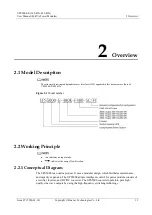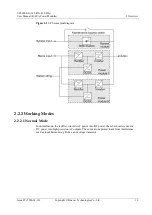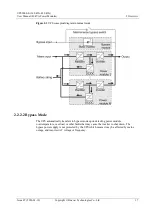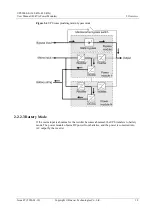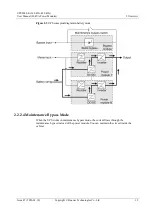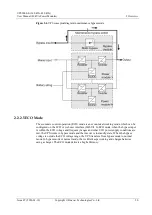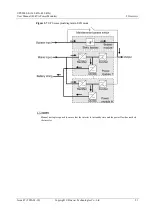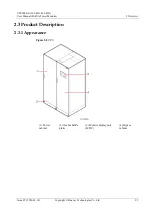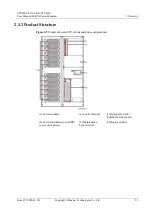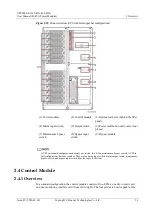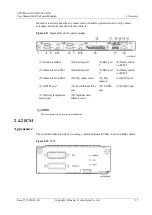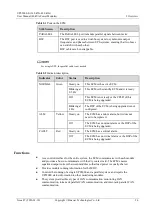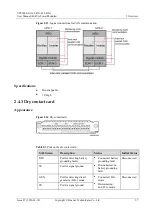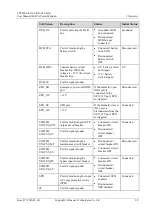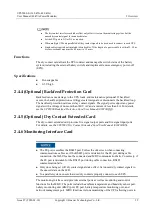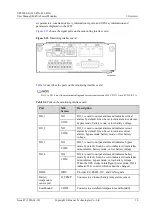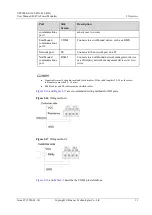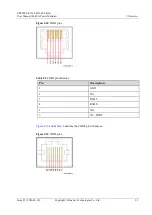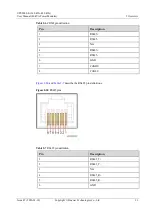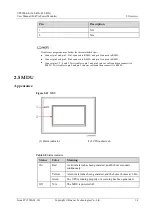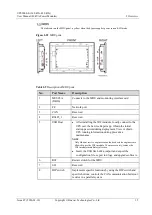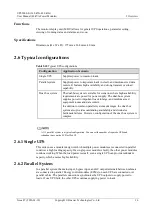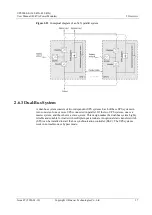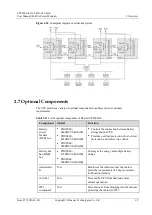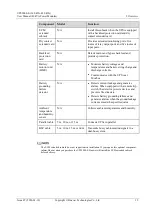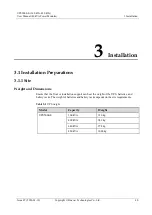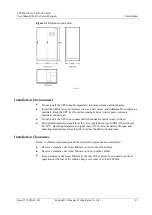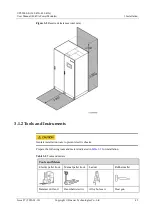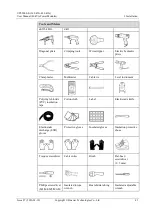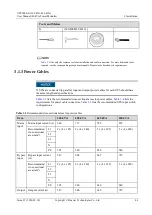
UPS5000-E-(360 kVA-480 kVA)
User Manual (40 kVA Power Modules)
2 Overview
Issue 07 (2020-01-10)
Copyright © Huawei Technologies Co., Ltd.
29
The dry contact interface card takes effect only after it is set on the monitoring system. Set the
unused dry contact signal to the unused status.
Set the EPO port to NO or NC as required.
When multiple UPSs are paralleled, all dry contact signals to be used need to connect to each UPS.
Single cables require dual-insulated twisted cables. If the length of a power cable is within 25–50 m,
its cross-sectional area must be 0.5 mm
2
to 1.5 mm
2
.
Functions
The dry contact card allows the UPS to detect and manage the switch status of the battery
system (including the external battery switch) and implement remote emergency power-off
(EPO).
Specifications
Hot-swappable
0.5 U high
2.4.4 (Optional) Backfeed Protection Card
Backfeed can cause damage to the UPS, loads, and maintenance personnel. If backfeed
occurs, the backfeed protection card triggers alarm signals, or disconnects the backfeed loop.
The backfeed protection card uses relay contact signals. The signal ports support any power
signals with a voltage of no more than 240 V AC and a current of less than 4 A. For details,
see the
UPS5000 Backfeed Protection Card User Manual (03021KQQ)
.
2.4.5 (Optional) Dry Contact Extended Card
The dry contact extended card provides five signal output ports and five signal input ports.
For details, see the
UPS5000 Dry Contact Extended Card User Manual (03021RKN)
.
2.4.6 Monitoring Interface Card
The FE port resembles the RS485 port. Follow the silk screen when connecting
communications cables as, if the RS485 port is mistaken for the FE port during cable
connection, the WebUI cannot be connected and MDU communication fails. Conversely, if
the FE port is mistaken for the RS485 port during cable connection, RS485
communication fails.
Only once being set will dry contact signals take effect. Set unused dry contact signals to
the unused state on the LCD.
In a parallel system, ensure that used dry contacts properly connect to each UPS.
The monitoring interface card provides external ports as well as monitoring and control
functions for the MDU. The ports include the ambient temperature and humidity sensor port,
battery monitoring unit (BMU) port, FE port, battery temperature monitoring port, and
network management port. MDU functions include monitoring of the UPS, allowing users to

